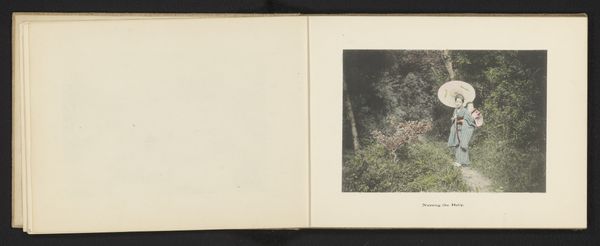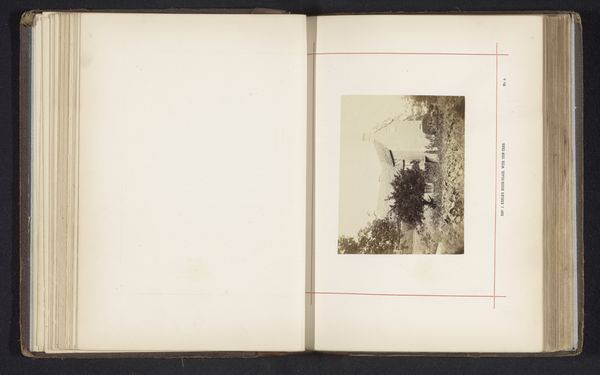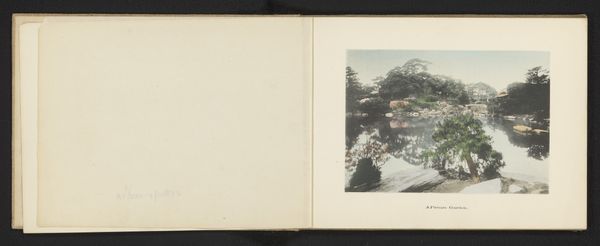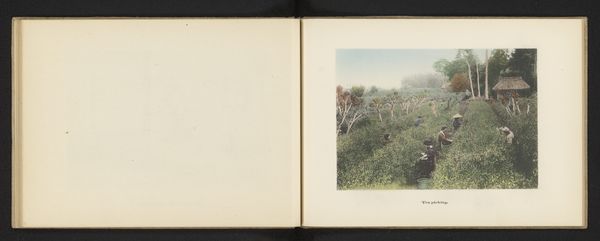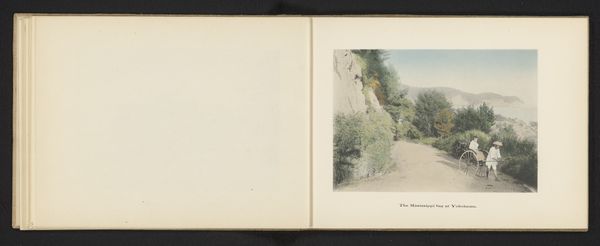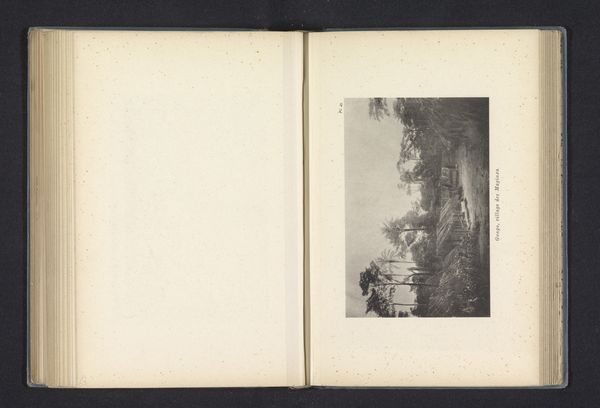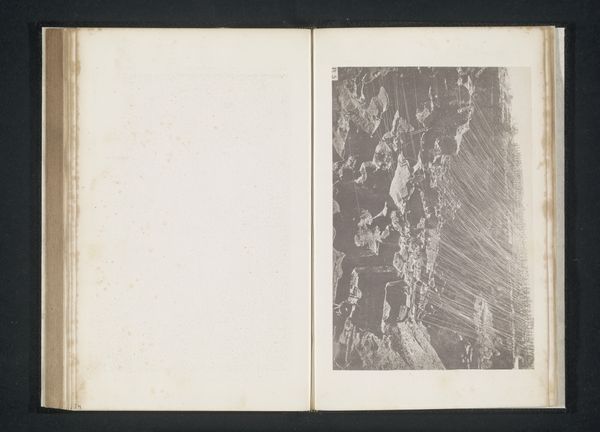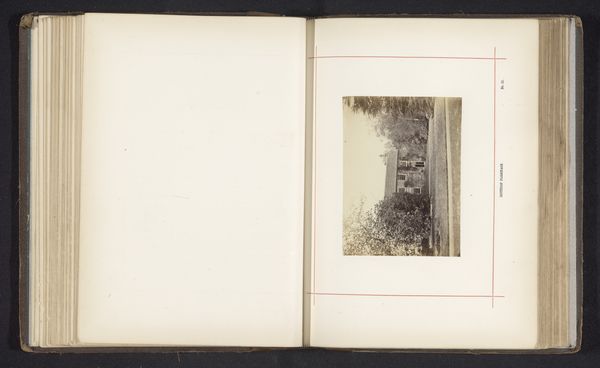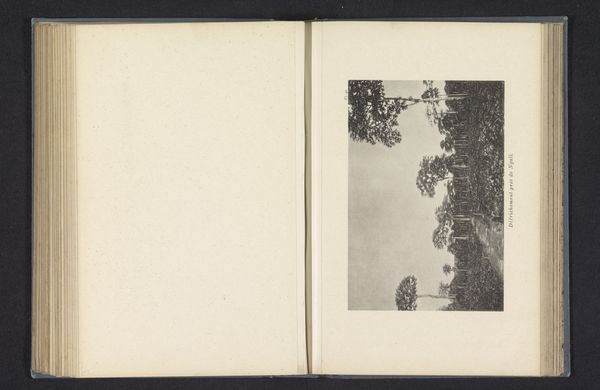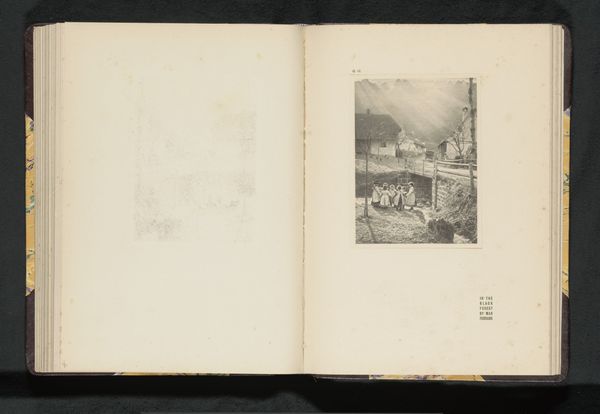
photography
#
landscape
#
photography
Dimensions: height 104 mm, width 150 mm
Copyright: Rijks Museum: Open Domain
Editor: This photograph is called "Gezicht op de Nunobiki waterval bij Kobe," taken by Kōzaburō Tamamura sometime between 1895 and 1905. It’s a landscape shot of a waterfall; what I find particularly striking is how the man-made structure intersects the natural cascade. How do you interpret this work? Curator: What stands out to me is the historical context. During that time, there was Japonisme which was a Western craze for Japanese art and design. This photo reflects this moment, particularly in its conscious framing and idealization of the landscape. It prompts questions about cultural appropriation and the commodification of exotic landscapes for Western consumption. What do you think this photograph says about the photographer's position during this period? Editor: That’s a great point. I hadn't considered the photographer's role in presenting this image to a potentially Western audience, reinforcing exotic stereotypes. Did Tamamura perhaps aim to challenge those stereotypes or simply cater to the Western gaze? Curator: Exactly! Was he complicit in the orientalist view, or did his work subtly critique or resist it? Analyzing such works through the lens of power dynamics and representation can illuminate the complexities of cross-cultural exchanges. What is the gaze? And what are the ethics of photographic representation of culturally significant sites like Nunobiki Waterfall? Editor: So it becomes more than just a pretty picture; it becomes a document loaded with social and political implications. I see the value in questioning the context. Thanks. Curator: Indeed, analyzing through a lens of critical cultural theory adds depth. We begin to unpack hidden narratives and the photograph becomes a mirror reflecting not only a landscape but a complex history of cultural interaction.
Comments
No comments
Be the first to comment and join the conversation on the ultimate creative platform.
